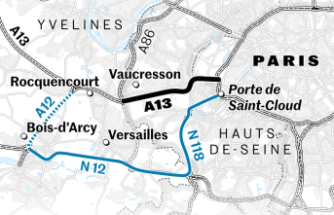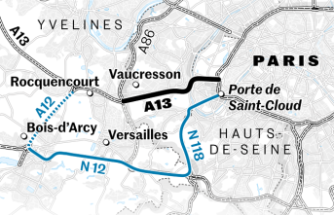With the small car Zoe, Renault was once one of the electric car pioneers. But then nothing came for a long time. Now a new model is set to conquer the mass market - and the competition must be trembling.
What Renault has rarely managed to do with the Mégane should now work all the better with the electric offshoot of the compact model: overtaking the competition from Wolfsburg in sales figures. If the VW Golf was previously the benchmark for the French, it is the VW ID.3 in the e-age. And it must actually tremble.
Contrary to what the name suggests, the Mégane E-Tech Electric has nothing more in common with the petrol and diesel Mégane than the name and the fact that it belongs to the compact class. While VW has completely reinvented its e-mobile family down to the terminology, Renault is demonstratively sticking to the tried and tested. The body, with its slight crossover touch, appears modern, but remains true to the brand's style, which is also currently carried by conventional Renault models. The fact that an electric motor is working under the front hood can only be guessed at from details such as the missing tailpipes. Even the radiator grille with its air openings could be emblazoned in a similar shape on a petrol or diesel engine.
The interior is more futuristic. It is dominated by a screen duo, whose horizontal part behind the steering wheel takes over the tasks of the instruments. A second display in classic portrait format, on which the usual touchscreen functions run, is connected almost directly to it. The whole thing not only looks modern, but can also be used exceptionally well, very quickly and smoothly, which is due to the apparently powerful hardware on the one hand and the Android-based software on the other. Above all, the Google Maps navigation system and the voice control from the same group are not available in this quality except for premium brands. The ID.3 system, which was not yet fully developed at the start, at least easily overtakes Renault.
What I particularly like is that the route calculation takes the battery level into account and suggests suitable charging points - a function that, incomprehensibly, is anything but standard in e-car infotainment systems. However, Renault does not overdo it with digitization, but also has analog switches for air conditioning and volume control.
The interior of the Elektro-Mégane shows weaknesses more in the classic disciplines: While the sense of space in the front is still okay despite the comparatively high shoulder line, you feel a little cramped in the rear behind narrow windows and thick pillars. Tall people also quickly come into contact with the low roof. The trunk also makes concessions to the pleasing body design and is difficult to load with its high loading sill and narrow opening.
On the other hand, the Renault is completely convincing on the road. With the heavy battery, it sits firmly on the asphalt, stoically stays in lane and rushes through fast corners without any major body movements. Springs and dampers are generally designed to be comfortable, the steering remains somewhat indirect, as is usual from the brand.
In practice, the ample 160 kW/218 hp of power from the front engine should therefore be used less for sporty cornering and more for confident travelling. The ample practical range of a good 400 kilometers (manufacturer information: 450 kilometers), which Renault generates from a not overly large battery (60 kWh), also helps here. The experience the French have gained with the electro classic Zoe should play a role here. With a practical consumption of a good 16 kWh (without charging losses), the Mégane is at least hardly more thirsty for electricity than the small car.
When it comes to charging technology, Renault has significantly smoothed out the equipment and price structure, which was still very confusing at the time of market launch. If the basic model was initially a real snorer at the socket due to the undersized on-board charger and the missing CCS connection, now only reasonably fast versions are available. The minimum standard is a 22 kW on-board charger for the wall box and normal charging station, which allows the model with the large battery to be fully charged in just over three hours. The Renault draws at least 85 kW from the DC cable, optionally with 130 kW, so that ideally after 42 minutes 80 percent of the nominal capacity is in the storage again.
Of course, the base price of 35,200 euros promised at the start of the year cannot be kept. Instead, the model with the small 40 kWh battery (range 300 kilometers) already costs 42,000 euros, the model we tested with a large battery and powerful motor comes to at least 46,600 euros. The equipment is then already very neat and not far from complete. If you want the Google navigation system, you have to add another 850 euros. Anyone who orders full equipment increases the final price to just under 53,000 euros. That's a lot of money, but it's now standard in the middle-class compact electric vehicle class: VW ID.3, Hyundai Ioniq 5 or Nissan Ariya are also moving in these spheres.
The Mégane E-Tech Electric compares brilliantly with the competition - probably better than the conventional Mégane has been able to do in recent years. The economical drive, the brisk infotainment and the consistently modern appearance are on the plus side. There are only slight deductions for the miserable all-round view and the hard-to-reach trunk.












